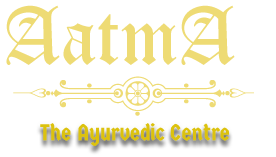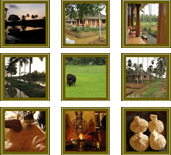Ayurveda
Ayurveda is the science and Art of living life in a manner useful to society. It has for its objects the preservation of health in the healthy and the restoration of health to the diseased. The word Veda in Ayurveda has been taken by all authorities to imply that it is both a part of and addendum to the great Vedas which have also been admitted by all savants of the West as “the oldest literature of the World”.
At the beginning of creation, it is said, Brahma, the creator of the world recollected and created the vedas (along with Ayurveda) in a book form named Brahma Samhita which is not available today. This book extends over a thousand chapters comprising altogether 100,000 slokas. Brahma taught Ayurveda to Prajapati and who taught it to Aswanikumaras, then to Indra. After him there developed two schools of Ayurvedic science- Athreya School of physicians and Dhanwantari School of Surgeons.
The great thing about Ayurveda is that it is the oldest of sciences.
Caraka, Susruta and Vagbhata are regarded as the main and fundamental pioneers of Ayurveda. Of these Caraka and Susruta are more ancient than Vagbhata. Vagbhata based his work on the work of the other two.
The different branches of Ayurveda
- Kayacikitsa: General Medicine, This consists of the diagnosis and treatment of General diseases, like Fever, Diarrhoea etc. Caraka samhita is the main text in this area.
- Balacikitsa or Kaumarabhrutya: Paediatrics. In this are described the treatment of the diseases of the children and their nursing -the method of the correct nursing and bring up of children. In the case of infants, several diseases may occur owing to the defect and default in the mothers’ milk upon which it feeds. In this case, the mother also is to be treated for the benefit of the child. This treatment is also part of this system. Kasyapa Samhita is the main text in this field.
- Grahacikitsa or Bhuta vidya: This branch deals with incantations and modes of exorcising the evil spirits and making offering to the Gods, Demons, Gandhrvas etc., for curing diseases originating from their malignant influences. These demoniacal possessions were originally understood to be various phases of deranged faculties of the mind or mental diseases and hence medicines are also prescribed in this system along with hypnotic treatments. Bhutavidya is not much different from Psychotherapy and Hypnotism of the modern age. But, nowadays this system is not very popular.
- Urdhwanga Cikitsa or salakya Tantra: This consists of diagnosis and treatment of diseases of the parts of the body restricted to the head (the part above the clavicle) and neck such as ears, eyes etc..
- Salya Tantra: Any foreign matter that gets lodged into the human body and causes pain to that part may be called a Salya and Salya Tantra means that branch of medical science that deals with Salyas. This branch consists of Surgery and Midwifery. This talks about the methods of removing foreign bodies such as blades of grass, particles of stone, iron pieces etc. This deals with handling delivery cases, methods to bring about safe parturitions in cases of false presentation and methods of using surgical instruments. It also deals with applying cauterise with the help of fire and alkaline substances, of applying bandages, of treating wounds and ulcers, and of treating various diseases that follow surgical potions.
- Damshtra Cikitsa or agata Tantra:Toxicology,This is the branch that deals with the treatment of snakebite, rabies, Rat-bite etc.
- Jara Cikitsa or Rasayana Tantra: This is the part dealing with preservation of youthfulness and prolongation of life as also preservation of strength, memory power etc.
- Vrusha cikitsa or Vajeekarana Tantra is the science of preservation and restoring the reproductive power. For those in whom semen has decreased,vitiated,or dried up, this part gives the necessary treatment for its increase, and purification thereby imparting sexual vigour.
Ashtavaidyas are so known by virtue of their proficiency in all the eight systems of treatment.
Pharmacology:
An understanding of the therapeutic action of various articles of food with special reference to the maintenance of health and strength is essential in Ayurveda. The theory adopted by our ancients, which forms the basis of their investigations is that every substance whether meat, vegetable or mineral possesses five properties, namely, Rasa, Guna, Veerya,Vipaka and Prabhava.
- Rasa is taste. There are six Rasas (as evidenced by the tongue) and they are sweet, sour, saline,bitter, pungent and astringent.
- Guna is Virtue. This is the inherent property of a substance causing a particular effect when used either internally or externally.
- Veerya or Power. According to the influence of nature a substance is believed to be either hot or cold in power. With respect to a drug it is therefore called Ushna-veerya (heating) or Seeta-veerya (cooling). This can only be inferred by the action.
- Vipaka or consequence of action. This is the change which a medicine undergoes in the organism under the influence of internal heat and digestion. When a substance is brought into contact with the digestive juices in the stomach it is decomposed and is sometimes recognisable in another form with its medicinal greatly modified by the chemical changes that affect it.
- Prabhava or inherent virtue: This is said to be the specific active force in a drug. There are certain drugs whose taste property,power and consequence of action are analogous, and yet the effects produced by them are quite dissimilar. This special inherent property of substance is called Prabhava.
Ayurvedic tradition has identified three basic humours viz. Vayu, Pitta and Kapha, the fluctuations of which decide the constitution of the human body. A perfect balance of the three preserves the human body. They remain invisible to the eye and can only be experienced. Dhatus or elements can be seen on the body. The body is constituted of these viz. Rasa, Rakta, Mamsa, Medas, Asthi, Majja and Sukra. They are called Dhatus as they carry the constituents and diseases of the body.
Violation of laws of nature results in diseases. When natural laws are violated the three humours will be provoked and they cause diseases.
There is no effect without any cause. Consequently in Ayurveda the cause of a disease is of utmost importance. Many disease can be cured by identifying and eliminating the cause.
Ayurvedic treatment is of two types: Samana treatment and Sodhana treatment. Samana treatment consists in the curing of non chronic diseases with in the body itself by administering medicines. Sodhana treatment consists in drawing the vitiated humours to the elementary canal purging them out of the various orifices of the body through Panchakarma treatment. Panchakarma is a system of Five methods of Vasti, Virecana, Vamana, Nasya, and Raktamoksha. (enema, purgation, emission, snuff and blood letting.)
Ayurveda in Kerala
From the history and literary researches of Kerala we could understand how far advanced and civilised Kerala was in the ancient times.
Ayurveda could boast of dim distant antiquity and it is the oldest of all systems of Medicine in the world.-a fact which is admitted by both the Eastern and Western scholars. Ayurveda – the science of life – has been practised in Kerala from time immemorial. A large number of potent and sacred medicinal plants were lost sight of and most of them can not be identified at present in parts of the country. But on the west cost the case is somewhat different. Here in Kerala medicinal plants are abundant and they grow wild due to the climatic conditions of the area.
Ashtanga hrudaya and Ashtanga Samgraha of Vagbhata are more popular in these parts than any other place in India. The unique position which Kerala has attained with respect to Ayurveda is owing to its possession of certain special kinds of treatments prevalent from very very old times and which were found to be of immense effect in certain diseases for which other systems have not yet found out curative measures. The measures are known in Kerala, under the general term Sneha Kriyas and are subdivided in to many forms as Dhara, Kizhi, Pizhichil, Navara kizhi etc,. These methods of treatments are done before Panchakarmas for bring the vitiated humours in to the alimentary canal.



